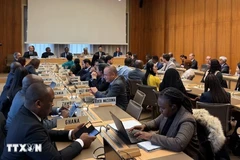According to Dr. Tran Hong Quang, Director of the Vietnam Institute for Development Strategies, the master planning aims to create an efficient and sustainable spatial distribution model for national development, forming motivation regions, economic centres, strategic cities, concerted and modern infrastructure networks with strong connections among regions, urban and rural areas.
This will prompt the country’s high economic growth, while speeding up the implementation of the goal of becoming a developing country with modern industry and high middle income by 2030 and a developed country with high-income, equality, democracy and civilised society by 2050, he said.
Commenting on the draft master plan, Dr. Danny Leipziger from the WB said that the planning showed greater attention to the environment, climate change and economic corridors.
Highlighting a number of changing factors, he advised Vietnam to continuously update the planning to make sure it suits the reality, while learning experience from other countries to make yearly amendments.
Experts held that it is necessary to link small cities with big urban areas, and underlined the need for Vietnam to promote its competitive advantages of particular regions and be clearly aware of risks.
Regarding the orientations for the development of the national urban system included in the draft planning, Dr. Pho Duc Tung from the WB said that the development of the system should ensure sustainability and security-defence.
The scale of the urban system will inevitably increase with the urbanisation rate expected to reach 50% in 2030 and 70% in 2050, making up 85% of GDP by 2030, he said, adding that land for urban areas is forecast to make up 2.3% of the country’s natural area.
Planning and infrastructure should be one step faster to guide urban development, he added.
Dr. Tung underlined that the urban system is the core of economic growth, therefore the structure of the urban system needs to be associated with the economic development strategy. Particularly, it is necessary to focus on developing corridors and key areas into locomotive of economic growth.





























